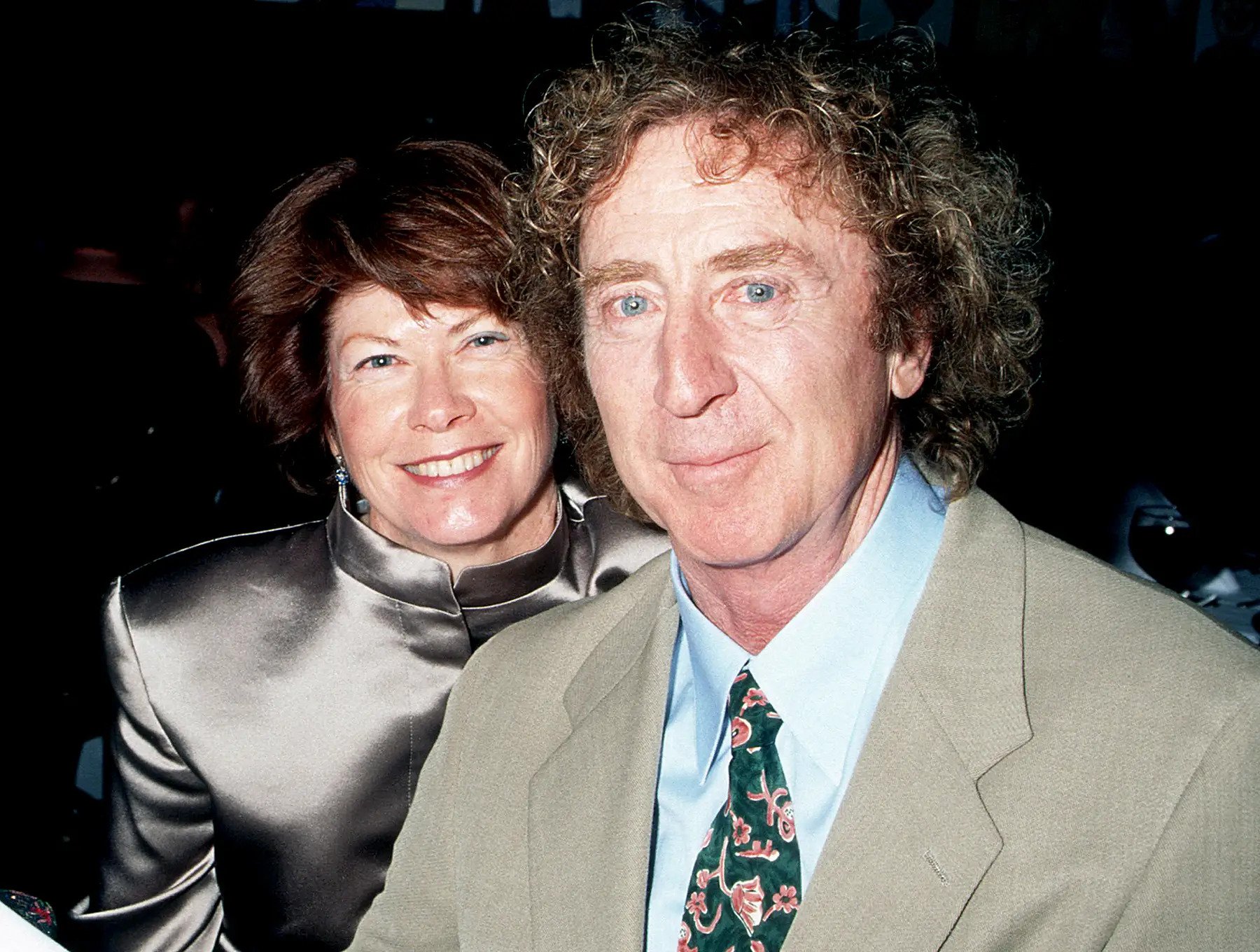Gene Wilder And Grandson: Exploring The Biological Threads That Connect Generations
When we hear "Gene Wilder and grandson," it naturally brings to mind thoughts of family connections and the stories passed down through time, but it also, in a way, makes us consider something even more fundamental: the very building blocks of life that tie us all together.
You know, it's almost as if the name "Gene" itself sparks a curiosity about the incredible information packed within our biological makeup, the kind of data that shapes who we are and what we might pass along.
This exploration isn't about one specific person's family tree, but rather, it's a look at the "genes" that are so vital to every one of us, and how they, in a sense, define the legacy carried forward to a "grandson" or any new generation, as our own text, actually, helps us understand.
Table of Contents
- Understanding Our Genetic Blueprint
- Genes and the Legacy of Health
- Key Genes and Their Functions
- Unlocking Genetic Information for Research
- Frequently Asked Questions About Genes
Understanding Our Genetic Blueprint
So, when we talk about genes, we're really talking about the fundamental instructions for life, more or less. These tiny bits of information are what make us, you know, who we are, influencing everything from how our bodies work to how we might look. It's a pretty big deal, actually, when you think about it.
The genecards human gene database, as a matter of fact, is like this huge collection, an index really, of all these amazing genes. It's got terms and conditions, user feedback, and a privacy policy, just like any big information system, which is pretty standard, you know.
This database is a vital tool, apparently, for anyone wanting to get a better handle on the vast number of genes that make up the human body. It's a really comprehensive source, basically, for looking up all sorts of genetic information, which is quite helpful.
The Basic Building Blocks: What Genes Do
Alright, so let's get into what these genes actually do. For example, our text points out that one particular gene, it encodes a very common kind of hexokinase. This hexokinase, it sort of makes its home, you know, on the outer part of mitochondria, which are like the little powerhouses of our cells. It's pretty cool, if you ask me.
Then there's another gene, and this one, it encodes two different proteins, actually. We're talking about sterol carrier protein X, or SCPX, and sterol carrier protein 2, SCP2. These two come about, apparently, because transcription starts from two separate spots, each with its own way of being controlled. It's a bit intricate, but very clever.
And then, you know, we have genes that encode actin proteins. Actins, they are really old, evolutionarily speaking, and they haven't changed much over time. They are involved in so many things, like how cells move around, their basic structure, keeping things together inside the cell, and even how cells talk to each other. They also, surprisingly, help kick off the creation of other things, acting like a catalyst, which is pretty neat.
How Genes Shape Us: From Proteins to Pathways
Genes don't just make individual proteins; they really shape entire systems within us. Our text mentions how genes are tied to functions, proteins, disorders, pathways, and orthologs, which are basically similar genes in different species. It's like a complete picture, you know, for understanding what a gene is all about.
For instance, complete information for the PTPRC gene, which stands for protein tyrosine phosphatase receptor type C, includes all these things: its function, the proteins it makes, any related disorders, the pathways it's involved in, and its orthologs. It’s a very detailed look, really, at how one gene fits into the whole biological scheme.
And actins, as I was saying, are incredibly well-preserved proteins, meaning they've been around for ages, virtually unchanged. Their roles are pretty wide-ranging, encompassing cell movement, providing structural support, maintaining the cell's integrity, and facilitating intercellular signaling. It’s pretty fundamental stuff, honestly, for how our bodies operate.
Genes and the Legacy of Health
It's fascinating, isn't it, how genes also carry the blueprint for our health, passing down tendencies and sometimes, even challenges, to a "grandson" or any new member of the family line. It's a pretty profound kind of legacy, if you think about it.
When Genes Go Awry: Associated Disorders
Sometimes, though, things can go a little bit wrong with genes. For example, mutations in that hexokinase gene we talked about, they've actually been linked to hemolytic conditions. That's where red blood cells are destroyed too quickly, which is not good at all, you know.
Then there's Nfe2l2, which is a protein coding gene. Diseases that are connected with Nfe2l2 include things like immunodeficiency, where your body's defenses are weak, and developmental delay, which means a child might not reach certain milestones at the usual time. These are pretty serious issues, obviously, that can come from a problem with just one gene.
Wt1 is another one, a tumor suppressor gene, and it's named after Wilms' tumor, which is a kidney cancer, because it's associated with its development. Mutations in specific parts of Wt1, like in exon 7 and 9, have been found over and over again in people with this tumor. It really shows how a tiny change can have a big impact, to be honest.
Fgf21, or fibroblast growth factor 21, is also a protein coding gene, and diseases linked to it include combined oxidative phosphorylation deficiency 8 and hepatocellular clear. It just goes to show, you know, how diverse the effects of genes can be on our health, sometimes in very complex ways.
Researching Genetic Connections
Geneanalytics, for instance, is a tool that actually helps researchers figure out which diseases are connected to their particular sets of genes. It also helps them discover the ways diseases happen and find specific markers for those diseases. It’s a pretty powerful way to look for answers, honestly.
This kind of research is really important, you know, because it helps us understand the subtle ways our genes influence our health and what might be passed down through generations. It's all about making sense of the incredibly detailed instructions within us, basically, to help future generations.
Key Genes and Their Functions
Let's take a closer look at some of these specific genes and what they do, as our text, you know, highlights their very particular roles in our bodies. Each one has a distinct job, sort of like a specialized worker in a huge, intricate factory.
Hexokinase: An Energy Catalyst
So, there's this really important gene, you know, that actually holds the instructions for something called hexokinase. It's a pretty common kind of protein, apparently, found almost everywhere in the body. This hexokinase, it sort of hangs out, you know, right on the outer edge of mitochondria, which are, like, the little energy factories inside our cells. It's just a little piece of the puzzle, but a vital one, actually, for how our cells work every day.
You see, this particular gene, it's quite widespread, more or less, meaning its role is pretty fundamental across various cell types. The hexokinase it produces, well, that localizes to the outer membrane of mitochondria, which is a rather specific spot, isn't it? It’s a key location for cellular energy processes, to be honest, and this gene helps make sure that happens just right.
Nfe2l2: A Protector Gene
Nfe2l2, which is short for Nfe2 like bzip transcription factor 2, is a protein coding gene, as our text points out. This gene is really interesting because it plays a part in protecting our cells, basically, from stress and damage. It's a kind of guardian, you know.
When Nfe2l2 isn't working properly, it can lead to some serious health problems. As mentioned, diseases associated with Nfe2l2 include things like immunodeficiency, where your body can't fight off illnesses very well, and developmental delay, which affects how children grow and learn. So, it's a pretty important gene for overall well-being, honestly.
The fact that it's a "bzip transcription factor" means it helps control how other genes are turned on or off, which is a pretty big job, you know, in the grand scheme of cellular operations. It's like a conductor for a whole orchestra of other genetic activities, in a way.
Wt1: The Tumor Suppressor
Wt1 is a gene that's pretty well-known as a tumor suppressor, which means it helps stop cancer from forming. It's actually named after Wilms' tumor, a type of kidney cancer, because it's so closely linked to its development. That's a pretty direct connection, obviously.
What's really striking is that specific changes, or mutations, in certain parts of the Wt1 gene, like in exon 7 and exon 9, have been found repeatedly in people who have Wilms' tumor. This kind of consistent finding really highlights the gene's critical role in keeping cells healthy and preventing uncontrolled growth, you know, which is what cancer is all about.
So, the Wt1 gene acts like a brake on cell division, making sure everything grows in a controlled way. When that brake isn't working, that's when problems like tumors can start to appear, basically. It's a very clear example of a gene's protective function.

Who is Gene Wilder Grandson? Does he have a Biological Child

Remembering Gene Wilder - MSP Film

Remembering Gene Wilder (2024) | ScreenRant